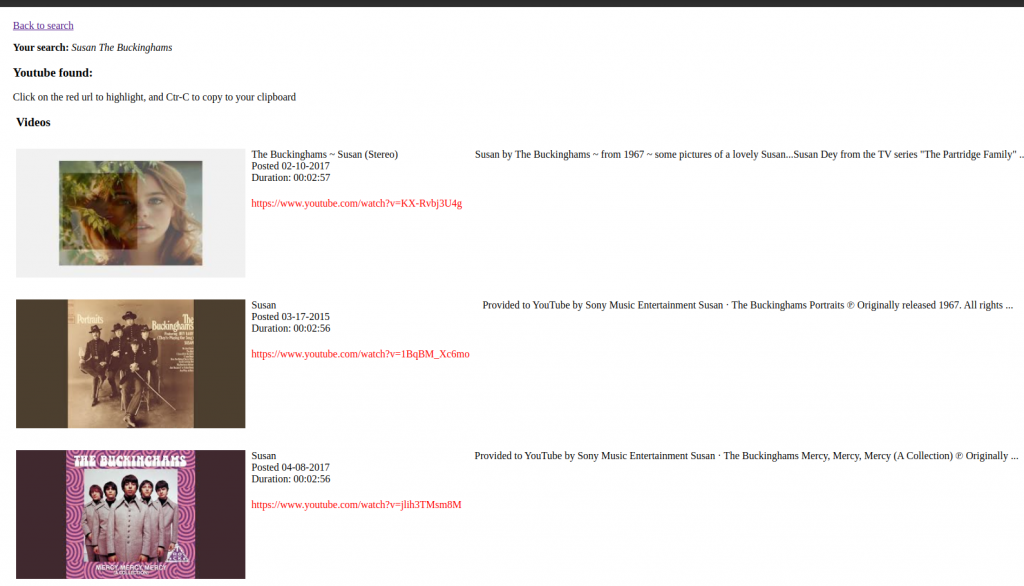A fast way to get the music on demand during a broadcast.
Read about youtube-dl software here. See the youtube-dl how to here This is the greatest tool since the invention of sliced bread, for collecting music files either in a playlist format or single files.
Quite often, during a live broadcast, I’ll receive a request from a listener for a song. I’d quickly search the KEEP to see if it’s in the library, and if it isn’t, perform a search to find it through Youtube, download the video and extract the audio, and load it into the playlist for play. It’s the fastest way I know of getting a song on the air that I don’t already have in the KEEP.
I use youtube-dl for obtaining the audio from a youtube video. If you’ve ever searched youtube for that song you couldn’t remember the name of, then you already know that just about everything ever recorded (and some that weren’t published) can be found in the archives of youtube’s search engines.
My Cool Youtube Search Tool

I was tired of the ads when using the youtube website. They were impeding me in my searches, so I decided to write my own search tool. yt.hawkwynd.com was launched, and is still my go-to page for grabbing URLS to use with youtube-dl on the fly. Often, during a live show, I will receive a request for a song. After searching the Keep, if it’s not there, then I fire up the yt.hawkwynd.com page, and enter the search. The links are clearly displayed, and easy to copy to the buffer for using the youtube-dl tool

To help me with the search, the duration time stamp shows how long the video is. Typically, songs are 3-5 minutes long, so with the timestamp, I can tell if the video is a good one to grab. I also look for the results which are not (Official Video) labeled, because they often contain additional crap that is not in the recorded song. So, from there, I get the URL to the video and move to the command line for obtaining (acquiring) the song.
Armed with the youtube URL, I can easily “acquire” the audio from the video with the use of the youtube-dl program, and save the file as FLAC format. After that, it’s a simple matter of updating the metadata in the file’s header and easily import it into the MIXXX library for immediate playback during a broadcast.
The total time to “aquire” a song and play it is under 2 minutes, which is very handy for me to be able to play requests quickly. My rule of thumb is to always play the requests before the regular playlist I have for the show, because most listeners are fairly impatient folk, and it makes them happy to hear their request without having to wait long periods of time.
And, to make the deal a bit sweeter, I will say the listener’s name before playing the song, “This next one is a request from Billy in Manchester…” sort of makes it more personal for them and people just love hearing their name associated with their request. A personal touch you don’t get on many internet radio stations.